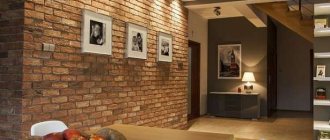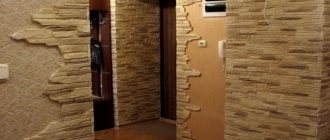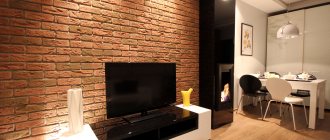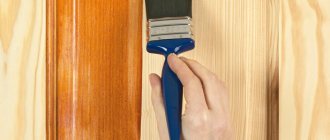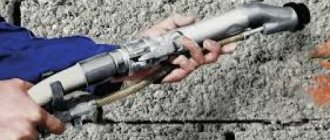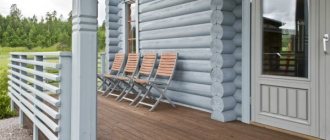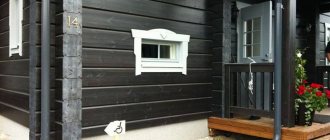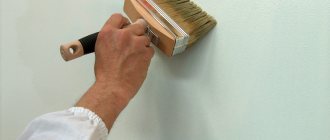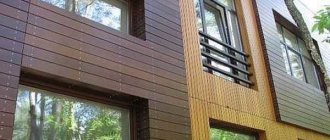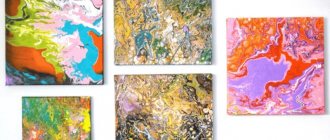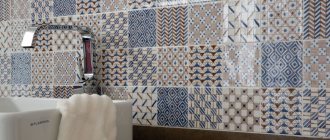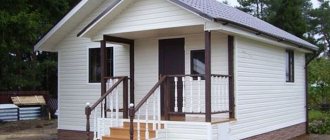Concrete is a fairly strong, wear-resistant and durable material that is not afraid of temperature changes and aggressive chemicals. Nowadays, different types of structures are made from concrete, including foundations, buildings, floors, walls and interfloor ceilings.
Although the material itself is very durable, its surface needs reliable protection, which a varnish composition for concrete can provide, significantly increasing its service life. So, let's talk about varnish for stone and concrete. Each type of concrete varnish has certain characteristics.
They produce paint and varnish materials that have increased resistance to wear, resistance to high temperatures and excellent resistance to moisture or fire resistance.
Features of gypsum finishing materials
Gypsum products are divided into two types according to their intended purpose. The first, facing, is used for decorating buildings: facades, balconies, gazebos, protruding corners of houses. The second type, finishing materials, are used in the interior. They can be found in the decor of walls, doorways, ceilings, arches, fireplaces and stoves, and individual objects (for example, wall mirrors).
Popular varieties of plaster finishes mimic the textures of brick or stone. The decor is made from a gypsum mixture (alabaster can be used instead of gypsum), industrially or manually. If you compare gypsum tiles with ceramics, mosaics, flexible or natural stone, the following advantages become noticeable:
- Light weight. Lightweight trim is much easier to transport, unload and install. The weight of the gypsum finish is not critical even for a plasterboard structure.
- Easy installation. The material does not require a complex and expensive supporting profile structure. The tiles are attached directly to the wall; careful leveling of the surface is not necessary.
Imitation of natural stone Source slatic.net
- Budget cost. Gypsum is a common and therefore cheap natural material. The use of gypsum finishing in interior design will save a significant portion of the funds allocated for repairs.
- Variety of designs. On sale are products that imitate shapes of brick and natural stone of different colors and textures. You can always choose an option to suit any interior style.
Gypsum decor has two significant drawbacks. Fragility can manifest itself even with a relatively harmless mechanical impact: a slight impact will provoke the appearance of cracks and chips. The second disadvantage is low resistance to moisture. Because of this, such decor cannot be used in the bathroom or kitchen, where the air is humid. In other rooms it is strongly recommended to use decorative stone varnish. It will create a protective layer and help the decorative surface last longer.
The gypsum surface needs protection Source ytimg.com
Advantages
The varnish has the following positive characteristics:
- Protects the surface from mechanical damage.
- Makes maintenance easier.
- Protects designs, shades and colors from fading and fading.
- Helps to update old tiles, which significantly saves the budget.
- Prevents the formation of bacterial plaque.
Flaws.
- The product contains chemicals, direct interaction with them can negatively affect human health.
- Therefore, it is worth taking care of the protective equipment and strictly following the recommendations given by the manufacturers.
- If you violate the application technology, you can irreversibly damage the material.
Removing the old layer is a complex and labor-intensive process.
Lucky
Varnishing is the last stage of installation of gypsum tiles. The resulting layer keeps the decor from destruction and makes it more attractive. In everyday life, several varnishes are used for decorative gypsum stone, each with its own characteristics. For work, they try to choose an option that is affordable, durable, and safe for health. Several types of paints and varnishes meet these criteria.
Oil
Oil-based plaster varnishes are obtained by dissolving the resin in drying vegetable oil. Additionally, additives are introduced: solvents and driers, substances that accelerate polymerization (drying).
The resin can be of natural origin (amber, rosin, shellac). Most natural resins are scarce materials (with the exception of amber and rosin). Due to limited production, natural resins are being replaced with synthetic analogues (polymers). Alkyd, phenol-formaldehyde, and perchlorovinyl resins are often used.
Oil-based paints and varnishes Source doorchange.ru
See also: Catalog of companies that specialize in finishing materials and related work
The varnish has an oily texture; after drying, it forms a dense layer with a slightly pronounced yellowish tint. When choosing an oil varnish, you need to remember the following points:
- It is used only indoors, as it has low weather resistance: outdoors it begins to deteriorate quite quickly.
- There are matte and glossy varieties of material.
- To work with oil varnish, special solvents are needed.
- There are tint varnishes on sale that are used as glazing for wood. After drying, their color appears stronger (darkens), which must be kept in mind if the shade is important for design purposes.
- Knowing the tendency of oil varnish to darken, they usually choose a composition that is slightly lighter than the desired result.
Matte varnish is more often used in interiors Source horoshijpotolok.ru
Shellac
A popular type of oil composition, it is used as a natural finishing coating for furniture, in decoupage techniques, and in various finishing works. Shellac has an alcohol base and forms a thin but durable coating. Decorative and protective impregnation is suitable for painting gypsum stone of any color and is used to enhance the color and texture of the gypsum base.
Shellac is not only transparent, but also colored, so it can be chosen for light tinting of the cladding. There is a way to create a marble effect on a tiled surface. To do this, apply a mixture of shellac and rosin (in technical alcohol).
Shellac varnish for artistic and decorative works Source mykrasim.ru
Acrylic (acrylate)
Acrylic varnish is a solution of acrylic polymer in a mixture of organic solvents (water-based). It contains modifiers and other resins and is harmless to health. A medium-thick substance is used for external and internal work on metal, glass and wood. It forms a film coating with a water-repellent effect, which additionally protects against ultraviolet radiation.
Acrylic varnish for gypsum decorative stone is used to give the base a shade, reveal and strengthen the texture. Glossy, matte and semi-matte compositions are available for sale. The glossy layer creates glare, as it reflects light quite strongly, but such an effect is rarely needed. Matte acrylic varnish is more often used, adding a touch of respectability to the decor.
Acrylic compositions are convenient because they are easy to apply, dry quickly, and then become transparent. This allows you to preserve the appearance and color palette of the tiles without distortion.
Decorative and protective acrylic varnish Source gidpokraske.ru
Composition of the varnish mixture
Typically, varnish for ceramic floor tiles is made from acrylic resins with the addition of very small ceramic particles. In addition, the tile varnish may contain polyurethane polymer substances that are dissolved in an aliphatic solvent.
Depending on the composition, glossy and matte varnishes for tiles are produced. On a matte surface, dirt is less visible, while a glossy finish is shiny, reflects light well, and looks very attractive. Regardless of the type of gloss, each composition has a high level of strength and wear resistance, protecting ceramic tiles from damage.
Tools
The set of tools largely depends on the tasks assigned. If you need to apply varnish to the decor around the doorway, a brush or sponge will suffice. If the amount of work is large, choose a roller or spray gun (airbrush). Spraying varnish for gypsum tiles under brick is convenient at high speed, while the composition is applied evenly, and the shade is the same at all points of the surface.
Avoid fluffy rollers and brushes made from natural materials. They will inevitably leave smudges, and the consumption of paint and varnish composition will be excessively large. Additionally, prepare the following tools and materials:
- Wipes (rags), degreasing solution.
- If you need sanding, you can't do without sandpaper or a sander.
- Impregnation (hydrophobic agent, not always necessary).
For varnishing you can use an airbrush Source ytimg.com
Rules and recommendations for application
When carrying out paint and varnish work, do not neglect protective equipment. Gloves, goggles and a respirator are essential items when working with synthetic substances. For greater safety, it is important to ensure good ventilation in the room.
Before starting work, you must carefully inspect the surface. If there is any contamination, dust, small crumbs, then it is necessary to thoroughly clean and free the surface being processed from this debris.
- If the surface to be treated has a large area, then it is more appropriate to use a spray gun, the work will go much faster with it, and for varnishing small parts it is more advisable to use a brush.
- The mixture should be applied in several layers, this will help increase the strength and durability of the coating. Before application, make sure that the surface is dry and clean, this will help to achieve fast and high-quality work.
It is important to prepare the necessary tools in advance, and strictly following the instructions, begin to carry out paint and varnish work.
Varnishing rules
Varnishing, like painting, is the final stage of laying tiles. But, if before painting the gypsum stone, the cladding is allowed to dry for 24 hours, then you will have to wait 1-1.5 weeks before varnishing. By this time, the glue will be completely dry, and the fixation will be as reliable as possible. To get the best results, it is useful to use the following tips:
- A water repellent is first applied. It penetrates into the plaster without forming a film, increases moisture resistance, and gives the material antiseptic properties.
Applying varnish to an uneven surface Source zhkpribrezhny.rf
- The varnish is applied with a convenient tool in two steps. The second layer is applied only after the previous one has completely dried.
- Leaks are almost inevitable. After drying, they are carefully cleaned with sandpaper (before applying the second layer).
- If necessary, the varnish layer can be removed with a special solvent; the plaster will not be harmed by this.
- The drying time of each layer depends on the type of varnish and is indicated in the instructions. The lower the temperature, the longer the coating takes to dry.
- After the second layer of yacht varnish has completely dried, the surface can be wiped with a damp cloth to get rid of residual stickiness.
Varnishing improves the aesthetics of the finish Source idei.club
Consumption
The consumption of tile varnish depends on how quickly the material absorbs liquid, as well as the temperature and humidity of the air. If the liquid is absorbed very quickly, you will have to varnish in several layers. In addition, in order to achieve the desired aesthetic result, it may be necessary to apply not one, but several layers of varnish; thanks to multi-layer varnish, the shade of the surface will change.
Briefly about the main thing
Gypsum is used to make beautiful and practical finishing materials - gypsum tiles and decorative stone. In order to maintain their attractiveness and improve their performance and decorative properties, varnishing with various compositions is used.
To create a protective layer, oil, acrylic and yacht varnishes are used. The desired composition is selected according to personal preferences: shade, reflectivity and other characteristics. Two layers of varnish are applied to the cladding, trying not to leave smudges. Before work, you need to prepare the necessary tools and study the instructions for applying paintwork.
Ratings 0
General information
Application of gypsum
Gypsum stone has a beautiful shape, and it also closely resembles brick or faux tiles, and also looks great when facing doorways and walls. Moreover, it can be used in combination with tiles, plaster, wood, photo wallpaper, as well as simple wallpaper. Gypsum stones are used either as fragmentary or complete finishing of premises. The stone is used for cladding fireplaces and emphasizing the base of columns. Gypsum stucco molding is sold in hardware stores, and they also sell moldings made from this material, used to decorate walls and ceilings. From gypsum powder you can make beautiful figurines for the garden, figurines, and various sculptures.
Advantages
Various building mixtures are made on the basis of gypsum, both for internal and external types of work. Dry gypsum is added to many putties, adhesives and plasters as an excellent binding component. This material is added to the majority of many construction and finishing materials, because it will have the following advantages:
- External beauty.
- A small mass that will be combined with a high degree of strength.
- Creates excellent noise and heat insulation.
- They can be used to make beautiful, unique products for decorating the exterior and interior.
- Environmentally friendly and safe material for human health.
- Mold and fungal colonies will not settle on it.
- It is a vapor-permeable material that breathes.
- Very easy to process and can be applied to all types of surfaces.
- Using affordable and uncommon tools, you can easily change the shape of plaster products.
How to apply varnish?
